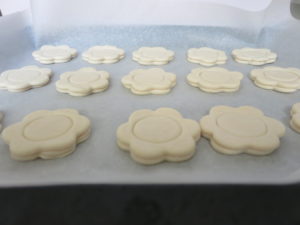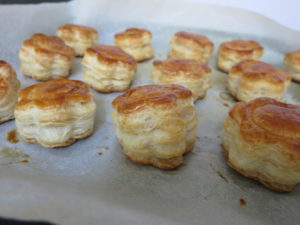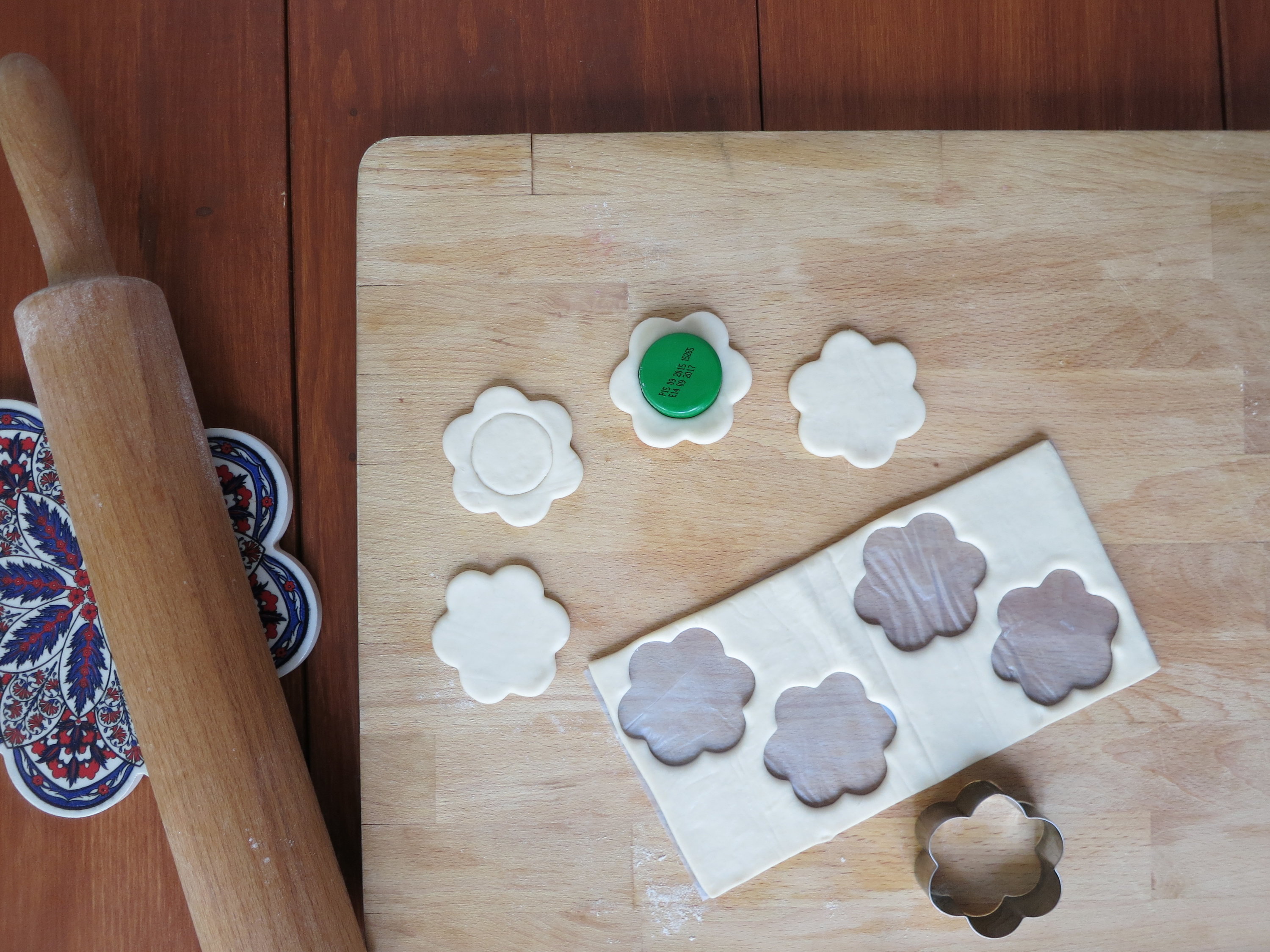A huge range of desserts from Syria, Lebanon, Jordan, Palestine and Jordan use sweet cream, or ishta, whether it’s stuffed into fresh silver-dollar pancakes or shells of puff pastry, wedged between layers of shredded pastry and cheese or semolina or just served in a dish with a drizzle of simple orange blossom syrup. These desserts are especially loved during the Muslim holy month of Ramadan at dinners after long days of abstaining from food and water.
When I was a child, living in my grandparents’ home, my grandmother would throw amazing dinner parties, and among heaps of other food, she’d make these ishta-stuffed puff pastry shells. I remember sneaking into the kitchen to “taste-test” them, stuffing as many into my mouth before being shooed out. They’re widely known as warbat bil ishta and usually come in the shape of a triangle, but in a play on words, some people – such as my grandma – like to make them in the shape of flowers, or wardat in Arabic. (You can, of course, make these into any shape you want.)
Makes 16.
Ishta
1 cup heavy cream
1 Tbsp cornstarch (plus additional as needed)
1 Tbsp sugar
1/8 tsp powdered gum arabic (optional, see note*)
1 tsp orange blossom water
Puff pastry shells
5 sheets frozen puff pastry, thawed
1 egg, beaten
Syrup
1 cup sugar
½ cup water 1 tsp lemon juice (or to taste)
1 Tbsp orange blossom water (or to taste)
Garnish
2 Tbsp pistachios, crushed
Ishta: In a cool saucepan, combine 1 tbsp cornstarch, sugar, gum, cream and orange blossom water and stir to dissolve. Place mixture on low heat and keep stirring slowly with a whisk in the same direction for 10-15 minutes until it reaches a thick, custard-like consistency. Remove from heat and stir to smooth out. If the mixture hasn’t thickened sufficiently, add ½ tsp cornstarch dissolved in a dash of milk, stir 1-2 minutes.
Transfer to a bowl and cover completely with plastic wrap, pressing the wrap against the surface of the mixture, and refrigerate at least two hours. Ishta filling can be made a day in advance.
*Note: Gum arabic is the hardened sap of the acacia tree and resembles hard little rocks. For best results, place the amount needed in the freezer for at least an hour (it can also be stored there) and crush with a mortar and pestle or a food processor. Use sparingly to add just a hint of the flavor to the cream.
Pastry shells: Preheat the oven to 200°C/400°F. Put a layer of parchment paper on a baking sheet.


Using a flower-haped cookie cutter, cut out 32 flowers from the pastry sheets. For the top layer, use a small round cookie cutter (a bottle cap is a good substitute) to cut circles into half of the flower and do not remove.
Gently place each top layer on a bottom layer (flowers without circular centers) to make 16 flowers. Do not press together.
Using a pastry brush, dip into the beaten egg and brush a thin layer of egg wash onto the tops of the flowers. Bake for 15-20 minutes, until golden brown.
Allow to cool for 5-10 minutes. Using a small serrated knife, remove the circles from the top of each flower and push down any excess puff pastry inside to make room for the cream. Let the pastry cool completely.
Syrup: While the shells are baking, in a small saucepan, combine sugar, water and orange blossom water. Place over low heat and stir with a spoon until the sugar dissolves. Squeeze a little lemon juice (no more than a teaspoon) into the syrup. Turn off heat and set aside to cool.
Assembly: Spoon a generous amount of cream into each shell. Replace the pastry circles on top of each. Drizzle syrup (about 2 tsp, or to taste) on each flower, and sprinkle pistachios across the top.


































